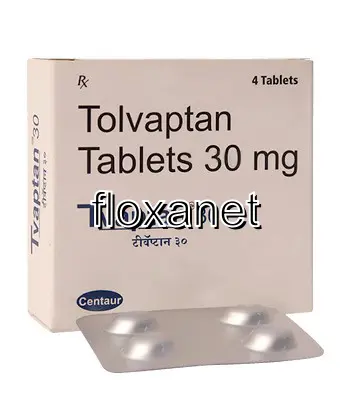| Package | Dosage | Price | Price per Dose | |
|---|---|---|---|---|
| Dosage: 15mg | ||||
| 180 pill | 15mg | NZD2,560.06 | NZD14.22 | |
| 120 pill | 15mg | NZD1,735.62 | NZD14.46 | |
| 90 pill | 15mg | NZD1,323.41 | NZD14.70 | |
| 60 pill | 15mg | NZD896.73 | NZD14.95 | |
| 30 pill | 15mg | NZD455.58 | NZD15.19 | |
| 20 pill | 15mg | NZD308.54 | NZD15.43 | |
| 10 pill | 15mg | NZD156.67 | NZD15.67 | |
| Dosage: 30mg | ||||
| 120 pill | 30mg | NZD2,261.14 | NZD18.85 | |
| 90 pill | 30mg | NZD1,725.98 | NZD19.19 | |
| 60 pill | 30mg | NZD1,171.54 | NZD19.53 | |
| 30 pill | 30mg | NZD590.58 | NZD19.69 | |
| 20 pill | 30mg | NZD397.73 | NZD19.89 | |
| 10 pill | 30mg | NZD200.06 | NZD20.01 | |

Tolvaptan Description
Introduction to Tolvaptan
Tolvaptan is a medication primarily used to treat conditions related to fluid retention and hyponatremia, such as autosomal dominant polycystic kidney disease (ADPKD) and certain cases of syndrome of inappropriate antidiuretic hormone secretion (SIADH). It belongs to a class of drugs called vasopressin receptor antagonists. By blocking specific receptors in the kidneys, Tolvaptan helps regulate water balance in the body, leading to increased urine output and reduced fluid buildup.
Mechanism of Action
Tolvaptan works by selectively inhibiting the V2 vasopressin receptors in the renal collecting ducts. Vasopressin, also known as antidiuretic hormone, promotes water reabsorption in the kidneys. When Tolvaptan blocks these receptors, it prevents water reabsorption and encourages water excretion without significant loss of electrolytes. This mechanism makes it especially useful in conditions where dilutional hyponatremia or cyst growth is problematic. The drug’s ability to induce aquaresis—excretion of free water—sets it apart from traditional diuretics that affect electrolyte balance more broadly.
Uses and Indications
The most common indication for Tolvaptan is the management of ADPKD, a genetic disorder characterized by the growth of numerous cysts in the kidneys. In individuals with ADPKD, Tolvaptan can slow cyst growth and preserve kidney function over time. It’s also used off-label for treating euvolemic and hypervolemic hyponatremia, especially in cases resistant to other therapies. Physicians may prescribe Tolvaptan to help correct dangerously low sodium levels caused by excessive water retention, provided it’s monitored carefully to prevent rapid sodium correction.
Potential Benefits
Patients taking Tolvaptan often experience significant symptom relief related to fluid overload. By reducing kidney cyst expansion, the medication can slow the progression of ADPKD, potentially prolonging the time before dialysis or transplantation becomes necessary. For hyponatremia, it restores sodium balance, alleviating symptoms like headache, nausea, and confusion. Its targeted action makes it a valuable option when traditional diuretics are ineffective or inappropriate.
Safety and Side Effects
While Tolvaptan offers important benefits, it is not without risks. Common side effects include thirst, dry mouth, increased urination, weakness, and dizziness. Because of its potent water-excreting effects, there is a risk of rapid sodium correction, which can lead to serious complications like osmotic demyelination syndrome. Regular monitoring of sodium levels is essential during treatment. Other potential adverse effects include liver enzyme elevations, which necessitate periodic liver function tests. Patients with liver impairment should use Tolvaptan cautiously, under close medical supervision.
Precautions and Considerations
Before starting Tolvaptan, a thorough medical history and baseline laboratory tests are needed. Patients should be monitored closely for changes in sodium and liver function. It is crucial to adhere strictly to prescribed dosing schedules and to report any adverse symptoms promptly. The medication should be used with caution in elderly patients or those with cardiovascular problems, as dehydration and electrolyte imbalances can worsen underlying conditions. Special caution is advised during pregnancy and breastfeeding, and consultation with a healthcare professional is mandatory in such cases.
Conclusion
Tolvaptan is a unique and effective medication for specific medical conditions involving water balance and cyst formation. Its targeted mechanism offers significant advantages but also requires careful monitoring due to its potential side effects. When used appropriately, it can improve quality of life and slow disease progression in patients with ADPKD and hyponatremia. As with all medications, it should be taken exactly as prescribed by a healthcare provider to maximize benefits and minimize risks.
